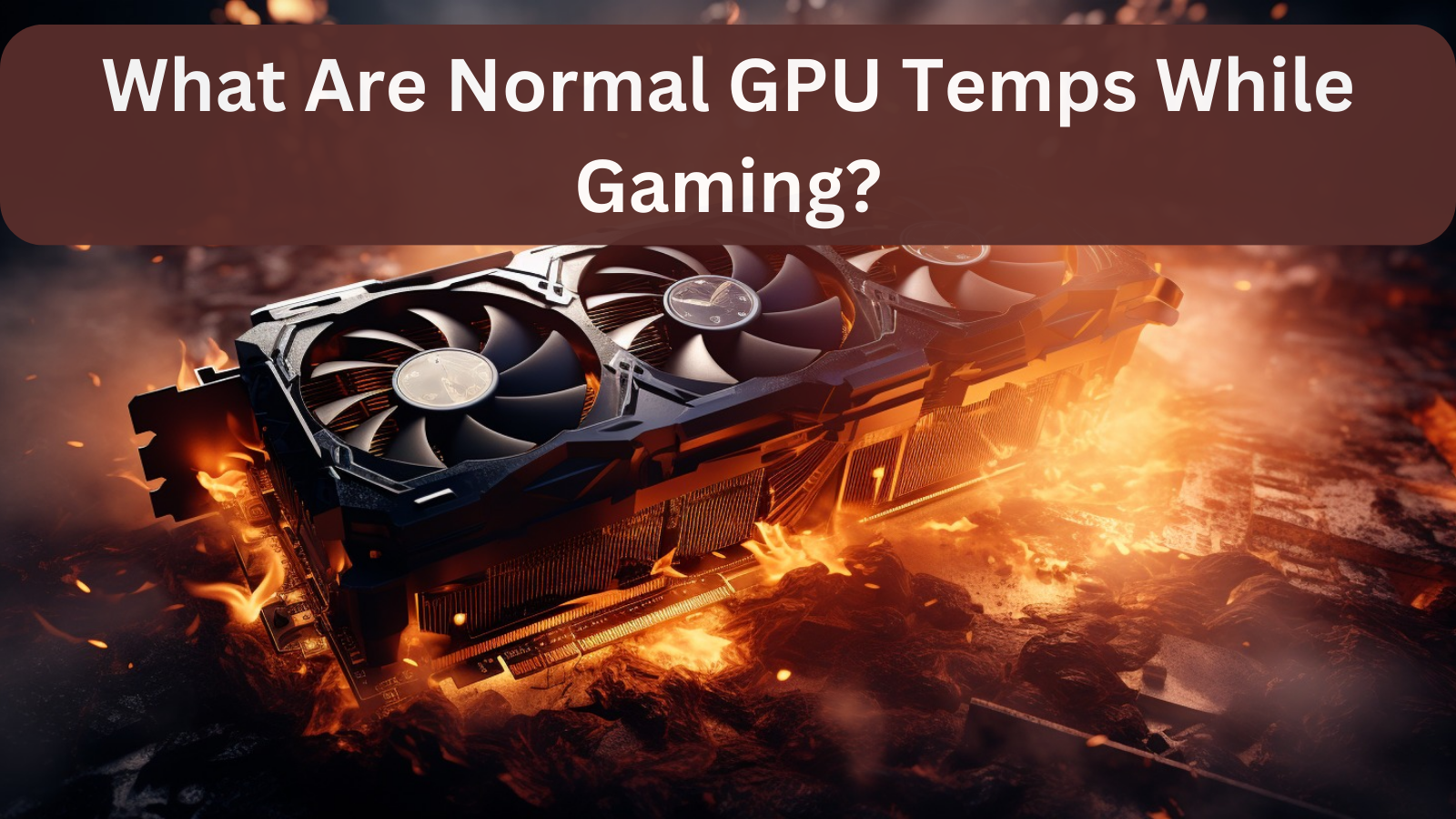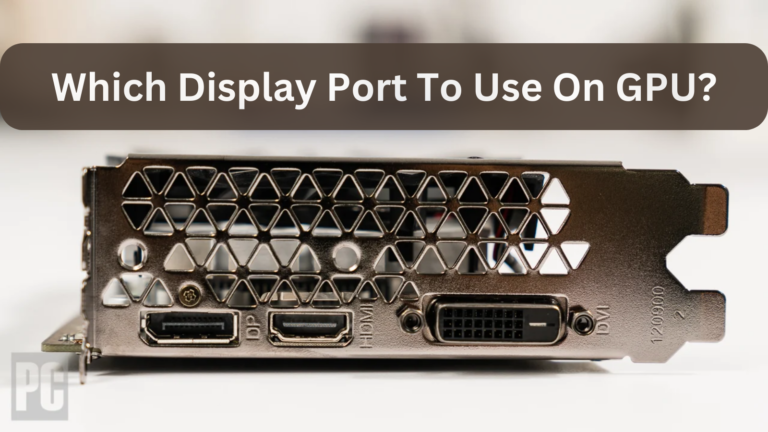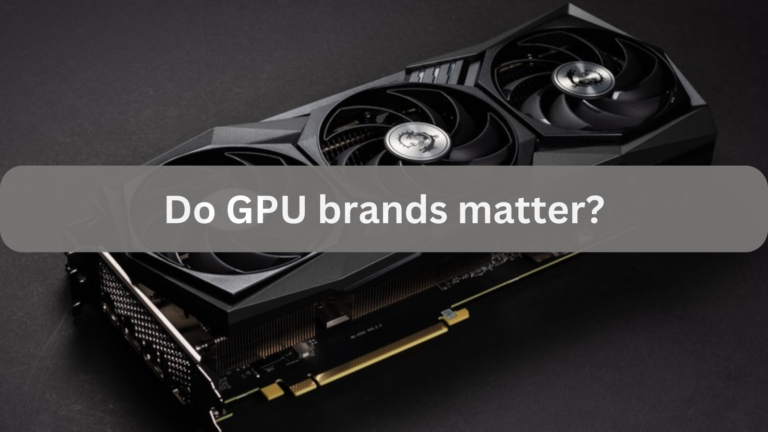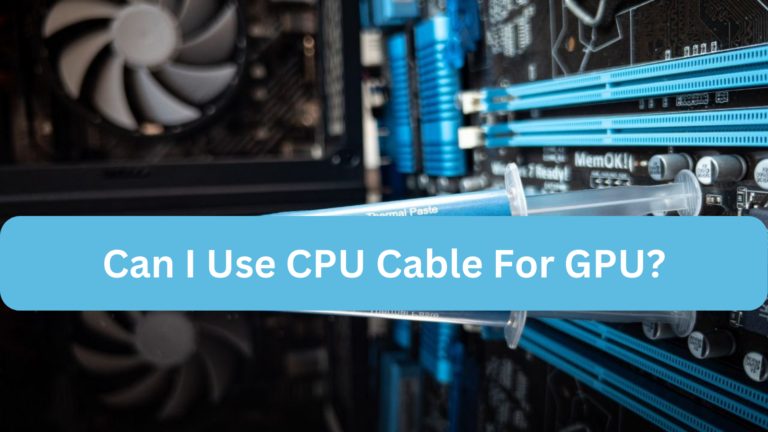What Are Normal GPU Temps While Gaming?
Your GPU is one of the parts of your PC that works the hardest when you’re gaming, pumping out frames, and producing intricate pictures to provide a fluid experience. But during these sessions, what temperature should your GPU be operating at?
An in-depth discussion of the subject “What Are Normal GPU Temps While Gaming?” will be provided in this piece, which will also help you understand why your graphics card overheats and how to keep it cool for maximum longevity and performance.
Read More: What is a reference GPU?
What Is a GPU and Why Does It Get Hot While Gaming?
A specialized electronic circuit called a GPU (Graphics Processing Unit) is made to speed up the production of images and other visuals. Whether it’s producing visuals in a game, processing video material, or assisting in AI computations, the GPU handles massive amounts of data and conducts sophisticated calculations, which generate heat.
1. Why Does the GPU Get Hot?
The GPU uses all of its resources to render graphics, textures, and effects at fast frame rates as you play games. This increased workload causes the GPU to consume more power, resulting in heat production. Your GPU’s integrated fans and cooling systems assist in dissipating this heat, keeping the hardware cold enough to function properly.
What Are Normal GPU Temps While Gaming?
What is a GPU’s optimal temperature range for gaming, then? Generally speaking, a GPU should operate safely and normally between 65°C and 85°C (149°F and 185°F) during gaming. Most contemporary GPUs are thought to perform best in this range.
1. Temperature Breakdown Based on Load and Environment
- Low Load (Idle or Light Gaming): Between 30°C and 60°C (86°F and 140°F).
- Medium Load (Casual Gaming): About 140°F to 167°F, or 60°C to 75°C.
- High Load (Intense Gaming or VR): About 167°F to 185°F, or 75°C to 85°C.
2. What Happens If GPU Temperatures Go Beyond 85°C?
When gaming, if your GPU routinely reaches temperatures above 85°C, your graphics card is likely experiencing thermal stress. Thermal throttling may result from this, in which case the GPU lowers its performance to prevent overheating. Over time, exposure to extreme temperatures can lead to wear and tear and shorten your GPU’s lifespan.
Factors That Affect GPU Temperatures
While gaming, a number of things can affect GPU temperatures; being aware of these will help you maintain ideal cooling:
1. Game Type and Graphics Settings
GPU temps are greatly influenced by the kind of game you’re playing and the graphics settings you choose. Simpler games like Rocket League or Minecraft won’t put as much strain on your GPU as graphically demanding titles like Cyberpunk 2077 or Red Dead Redemption 2 will.
- Resolution: 4K and higher resolutions demand more GPU power, which raises the temperature.
- Texture Quality: additional VRAM is needed for high-quality textures, which puts additional strain on the GPU.
- Frame Rate: A higher frame rate indicates that the GPU is generating more frames per second, increasing heat production and power requirements.
2. Cooling Solutions and GPU Design
Different cooling systems are included with different GPU types. For example, third-party cards may use advanced heat sinks and open-air coolers with several fans, whereas NVIDIA’s Founders Edition GPUs use blower-style coolers.
- Blower-style coolers: air is directed through the GPU and out of the case by these coolers. Although they often run hotter, they work well for tiny cases.
- Open-air coolers: These are more effective at cooling GPUs since they use numerous fans to force air over the GPU’s surface.
3. Case Airflow
Good airflow inside your PC chassis is vital for keeping GPU temperatures in check. Your GPU and other components may overheat as a result of poor ventilation trapping heat inside the case.
- Fan Location: Adding intake and exhaust fans can assist lower temperatures and increase ventilation.
- Cable Management: Proper cable management helps for greater ventilation inside the enclosure.
4. Ambient Room Temperature
GPU temperatures can also be influenced by the temperature of the room in which your PC is situated. It may be challenging for your GPU’s cooling system to maintain ideal temperatures in an overly heated atmosphere.
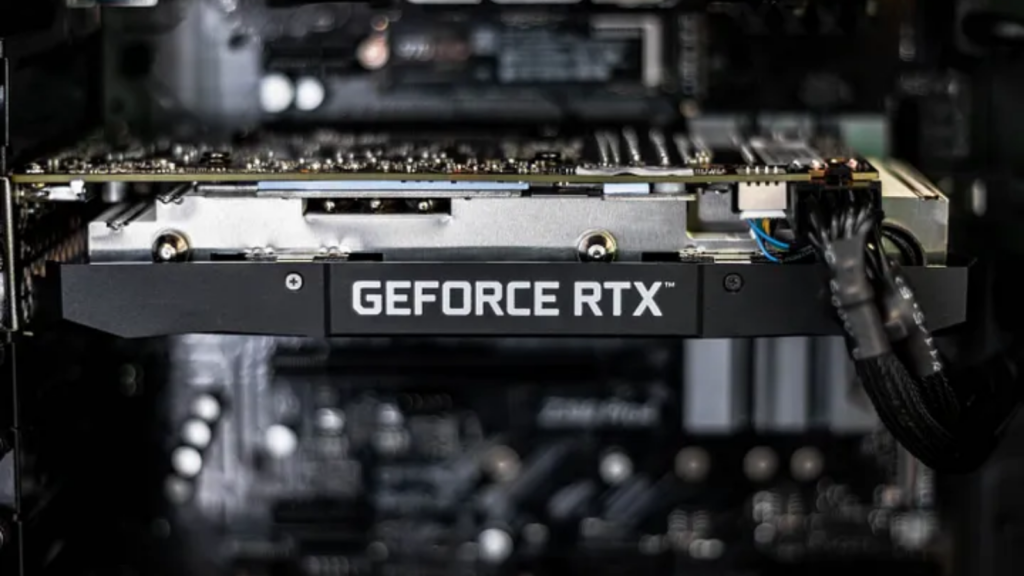
- Ideal Room Temperature: To keep the GPU operating cooler, keep the room at or below 25°C (77°F).
5. Overclocking
Your GPU’s clock speed and voltage will increase when you overclock it, increasing heat production and power consumption. Overclocking can result in temperatures that are higher than usual if it is not handled correctly.
How to Monitor GPU Temperatures While Gaming
It’s essential to keep an eye on your GPU’s temperature when gaming to make sure it stays within a safe range. You can utilize the following techniques and resources:
1. Built-in Monitoring Tools
There is software integrated into many GPUs that lets you keep an eye on the temperature in real-time. You can use AMD Radeon Software for AMD cards and NVIDIA GeForce Experience for NVIDIA cards.
How to Monitor Using Built-In Tools:
- Launch the AMD Radeon or NVIDIA GeForce Experience software.
- On the “Performance” tab, click.
- Locate the section labeled “GPU Temperature.”
2. Third-Party Software
Fan speed, power consumption, and other detailed monitoring features can be accessed through a number of third-party software solutions.
- One of the most widely used programs for tracking and overclocking GPUs is MSI Afterburner.
- HWMonitor: A small, lightweight device that shows current voltage, temperature, and fan speed information.
- GPU-Z: Offers comprehensive details on your GPU, such as sensor data and temperature.
Steps to Monitor GPU Temp Using MSI Afterburner:
- Install MSI Afterburner after downloading.
- Locate the temperature reading under the “Hardware Monitor” portion of the program after opening it.
- If necessary, adjust the fan curve to ensure ideal cooling.
3. In-Game Overlay Tools
Real-time system information, such as GPU temperature, can be seen through in-game overlays available on certain games and platforms, such as Steam and Discord. When monitoring on the go without leaving the game, these can be helpful.
What to Do If Your GPU Temps Are Too High
It is imperative that you take action to cool down your GPU if it routinely reaches temperatures beyond 85°C when gaming. What you can do is as follows:
1. Adjust Graphics Settings
Your GPU’s strain can be lessened by lowering your graphics settings, which will result in lower GPU temps. To observe a difference, lower texture quality, anti-aliasing, and shadow quality settings.
2. Improve Case Airflow
Add intake and exhaust fans to your PC case to make sure it has enough ventilation, and keep the case dust-free and clean.
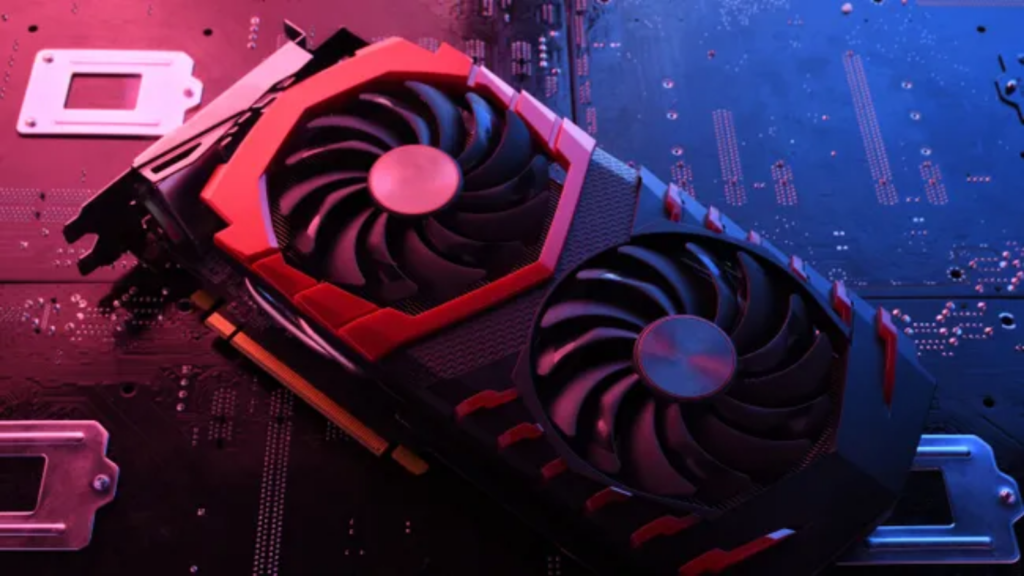
3. Reapply Thermal Paste
The thermal paste between the GPU die and cooler may have dried up if your GPU is older or has been used a lot. Reapplying thermal paste can assist in lowering temperatures and enhancing heat transmission.
4. Increase Fan Speed
Boost the fan speed with software such as MSI Afterburner to achieve enhanced cooling. Use caution because prolonged use of 100% power might quickly wear down fans.
5. Consider an Aftermarket Cooler
If the stock cooler on your GPU isn’t enough, you might want to consider getting an aftermarket cooler. These coolers frequently have superior thermal control and stronger fans.
Tips to Keep Your GPU Cool While Gaming
By keeping your GPU at its ideal temperature, you may avoid thermal throttling and increase its lifespan. Here are some techniques to help keep your GPU cool:
1. Clean the GPU Fans and Heatsinks Regularly:
An accumulation of dust can impede airflow and lower cooling effectiveness. Compressed air can be used to clean the heatsinks and fans.
2. Ensure Proper Case Ventilation:
To ensure optimal airflow, check that your case has an adequate number of intake and exhaust fans.
3. Avoid Overclocking:
Choose a more cautious overclock or refrain from overclocking your GPU if you’re worried about excessive temps.
4. Use a Fan Curve:
With MSI Afterburner, create a custom fan curve that will cause the fans to spin up more quickly as the temperature rises.
5. Optimize Room Temperature:
Maintain a cool gaming space to lower the surrounding air temperature of your PC.
Common Myths About GPU Temperatures
There are various myths and misconceptions regarding GPU temperatures. Let’s talk about a few of them:
1. Higher Temperatures Mean Higher Performance:
Heat throttling causes high temperatures to actually lower performance, even if a hotter GPU would seem to be working harder.
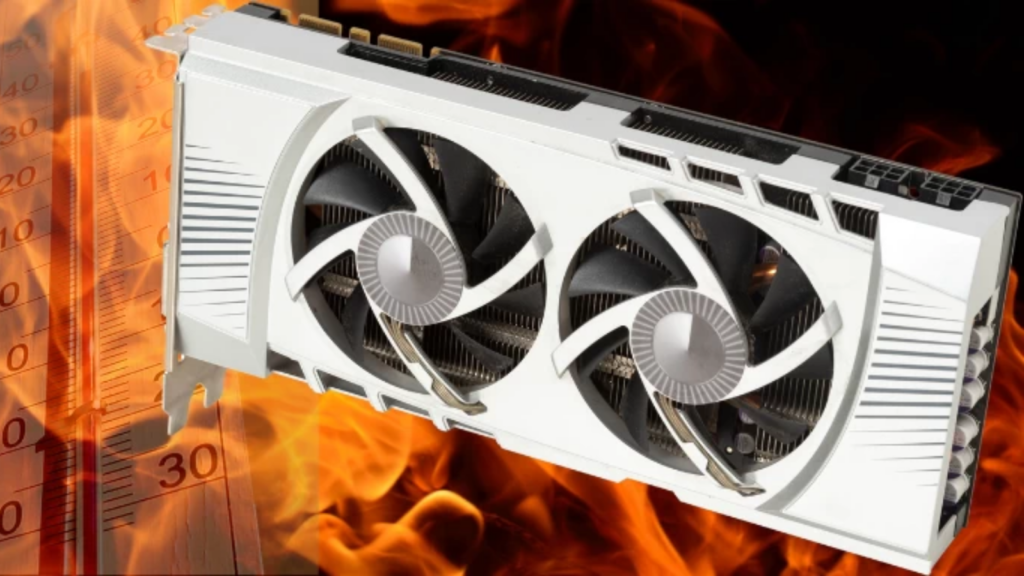
2. GPU Fans Should Always Run at 100% for Best Cooling:
It is not required to run fans at maximum speed all the time, and doing so can shorten their lifespan. Instead, employ a balanced fan curve.
3. Lowering GPU Voltage Will Always Reduce Heat:
Temperature stabilization can be achieved by reducing voltage, but if done improperly, instability and crashes may result.
Frequently Asked Questions FAQ’s
Q.1 Is 80°C Too Hot for a GPU While Gaming?
No, most GPUs operate within a reasonable temperature range of 80°C when gaming. For long-term use, it is best to keep it below 85°C.
Q.2 How Can I Reduce GPU Temperature While Gaming?
By reducing in-game graphics settings, enhancing case ventilation, and utilizing software to enhance fan RPM, you can cut GPU temperature.
Q.3 What Happens If My GPU Overheats?
If a GPU overheats, it may restrict performance or shut down to prevent harm. Extended overheating can shorten the GPU’s lifespan and cause irreversible damage.
Q.4 Is It Normal for GPU Temperature to Fluctuate While Gaming?
Indeed, variations in GPU temperatures due to workload are common. In games, temperature fluctuations are normal when switching between different scenes.
Q.5 What Is the Best Temperature Range for a GPU While Gaming?
When gaming, a GPU performs best in a temperature range of 65°C to 85°C. Maintaining it in this range guarantees lifespan and optimum performance.
Conclusion
Understanding “What Are Normal GPU Temps While Gaming?” in order to preserve the functionality and health of your hardware. For most current GPUs, it is best to keep your GPU between 65°C and 85°C. You can make sure that your GPU remains cool and operates at peak efficiency by keeping an eye on temperatures, maximizing airflow, and adhering to best practices.
You can now control your GPU’s temperature with confidence thanks to these insights and advice, guaranteeing a fun and reliable gaming experience free from concerns about overheating or performance lags.
